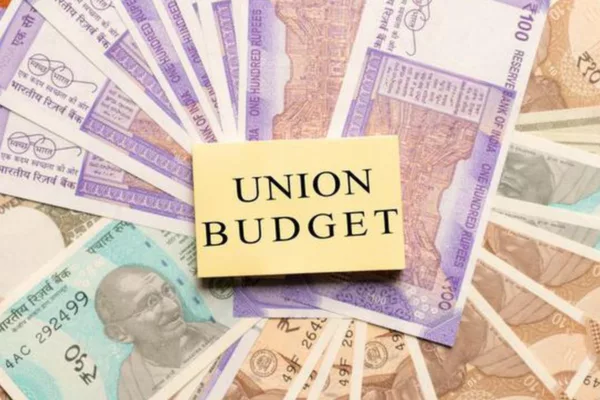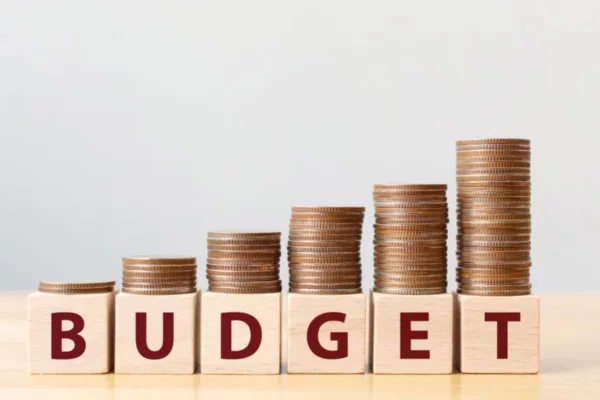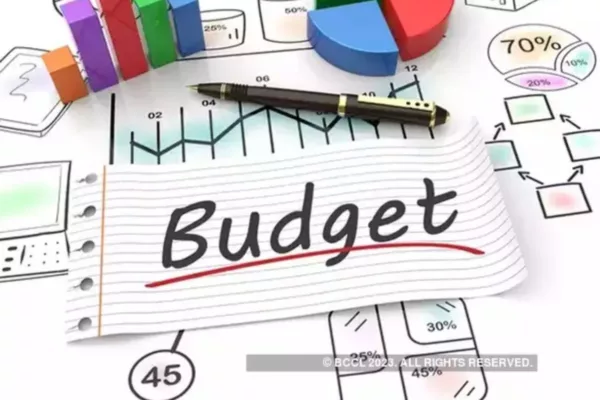Budget 2023 Highlights
Finance Minister Nirmala Sitharaman allocated much in this years budget to technology, auto, agriculture and research but what came as the highlight of the budget was her announcement on the personal income tax.

The 2023 budget, the last full budget of the Modi-led administration before the 2024 general elections, was presented by Finance Minister Nirmala Sitharaman; this was her fifth Union Budget.
Typically, the Finance Minister’s Budget speech begins at 11 AM. Concerns regarding the economy’s sluggish growth and the government’s will to restore its finite budgetary space to battle a dismal global outlook were expected to impact this year’s Union budget.
It was expected that FM would present initiatives to help India achieve growth that surpasses the rest of the world. I belong to the middle class and identify as such to understand them, the honourable finance minister (FM) recently declared at an event.
She continued by saying that while she was aware of what the middle class expected from the next Budget, she also wanted to point out that the current administration had not increased their taxes. Middle-class families anticipate a populist Budget in 2023 given this context and the fact that this is the last budget of the current administration before the 2024 General Elections.
There are many questions, but we’ve tried to highlight some of the most significant ones in this post.

Despite the spiralling high inflation curve, the basic exemption threshold and tax slabs have not increased as much as was desired over the past few years, leaving the middle class with less disposable income than was necessary. A new tax system with various lower-rate slabs was adopted in previous budgets, but the taxpayers did not like it.
Given the current rate of inflation and the fact that the middle class is already feeling the consequences of the Pandemic, a significant adjustment to the tax brackets is urgently required.
The FM may take action, such as raising the basic exemption threshold from the present cap of 2.5 lakhs to 4.0 lakhs. Additionally, the current tax rate for income over 5 lakhs and up to 10 lakhs is 20%. Between them, a slab with a lower tax rate of 10% or 15% could be added.
Encourage investing and saving: Increase the section 80C investment deduction cap and the 80D insurance premium deduction cap. There should be a review of the INR 150,000 Section 80C cap. Since approximately ten years ago, this limit has not altered.
The rise in the deduction cap would encourage taxpayers to save and invest more money, which would raise capital expenditure in the nation. In addition, Section 80C needs to be cleaned up since it now allows for a variety of insurance and investment options.
An additional effect of the Covid-19 outbreak has been an increase in the price of medical care in India, which has led to an increase in health insurance premiums. To encourage the middle class to make deliberate investments in health-related areas, the government could try to raise the deduction limit from the current deduction limit of INR 25,000/INR 50,000 to INR 1,00,000.

Higher interest deduction: Section 80TTA of the Income-tax Act allows for a deduction for interest on savings accounts. The interest on term deposits, however, is not covered by this exemption. Over the years, bank deposit interest rates have decreased.
In addition to this, placing bank deposits is discouraged by the lower exemption limit. The present 80TTA exemption level of 10,000 should be raised to at least 30,000 to promote the flow of capital into the banking industry. Additionally, interest on term deposits ought to be covered by the exemption as well.
Reviewing the standard deduction and introducing a deduction for home office costs for personnel paid on a salary:
The salaried class anticipates a hike in the standard deduction limit in the 2019 budget, which has been mostly constant for several years. The present ceiling is INR 50,000.
Organizations all across the world have embraced the work-from-home culture in response to the covid pandemic to give employees flexibility and keep top talent. People interested in working from their hometowns in smaller cities lessen the load on Tier 1 cities as a result.
To add to the momentum, the government should offer reimbursement for the costs paid by the employee, such as the price of furniture, high-speed internet, rising electricity costs, mobile expenditures, etc.
Children’s education and hostel allowance revisited: It has been nearly 20 years since changes were made to the child education and hostel allowance. This allowance is far from adequate at just between 100 and 300 per child each month. As a result, the FM might think about increasing the ceilings to $1,000 and $3,000 per child each month, respectively.
Raising the Homebuyer Tax Exemption Limit: Since the covid epidemic, India’s demand for real estate has grown. A further extension of 1-2 years in claiming the deduction for interest paid on house loans under Section 80EEA of the Income-tax Act may be offered to help the middle-class community. In addition, Section 24b’s home loan interest deduction has to be increased.
Long-term Capital Gains (LTCG) Exemptions are Increased and Capital Gains are Simplified: The stock market now has more retail investors participating in it. Companies, including SMEs, are increasingly trying to raise capital, which helps create jobs, boost GDP, and last but not least, improve tax revenues for the Exchequer.
LTCG is now taxed at a 10% rate on sales of listed equity shares. Furthermore, LTCG up to Rs. 1,000,000 is excluded. The exemption limit of INR 1,00,000 may be raised to encourage ordinary investors to make long-term investments.
Additionally, India has a very complex system for taxing capital gains. The holding term requirements vary depending on the type of capital asset. The type of capital assets transferred by the taxpayer affects the tax rates as well. Investors are hoping for a simplification of capital gain taxation in the 2019 budget, which would lessen the likelihood of irrational tax fights.

The Prime Minister has repeatedly stated in his public statements that his team is committed to improving a lot of India’s lower to middle-class communities. Protecting the revenue base in a narrow-minded manner could backfire. The forthcoming Budget must truly be populist to make sense of the current situation as a whole.
Long-term capital gains tax: It is commonly anticipated that the government will make some reforms to reduce this tax. Other predictions include a review of the securities transaction tax (STT), commodities transaction tax (CTT), and streamlining income classification for trading.
The holding period for debt instruments to be classified as long-term investments will be rationalised, as will the exemptions from short- and long-term capital gains tax and the incentives for retirement plan deductions in mutual funds, among other adjustments.
In this Budget, the government may modify the LTCG on equity to ensure that it is uniform across all asset types, including debt and real estate.
Tax on cigarettes: The government is expected to raise the tax on tobacco and products related to tobacco in the Budget after a two-year hiatus. Currently Cigarette sect to an NCCD (National Calamity Contingent Duty).
The Budget for FY21 increased the NCCD by 2-4 times for all cigarette stick sizes, resulting in tax increases of 9–15%. Noting that NCCD makes up about 10% of the total tobacco tax, it is likely that the Center will increase it this year, increasing the price of tobacco products such as cigarettes.
Income tax: The announcements made in the budget regarding the individual income tax slabs will be closely watched by individuals and the salaried class. Quantum Securities anticipates some adjustments to the income tax system. Since FY18, there have been no changes to tax rates.
To give the middle and upper middle class greater purchasing power, it indicated that as a result, it plans to reduce the threshold cap for the lowest tax rate.
However, a lot of many professionals do not anticipate that the personal income tax slab stays the consensus is that FM’s Budget 2023 address will call for some consistency across asset classes, tax rates, and holding times.
Under the “Section 80C” scheme, the government may raise the tax deduction ceiling from Rs 1.5 lakh to Rs 2 lakh per year for investments in savings vehicles such as bank fixed deposits, insurance premiums, and mutual funds.
According to estimates, if the plan is put into implemented encourage people to invest their surplus cash in the banking and financial systems. Since the first Union Budget of the Modi administration in 2014, the Section 80C deduction cap has been set at the current Rs 1.5 lakh.
Budget 2023–24: It is anticipated that capital expenditures would significantly rise, with roads and railroads receiving some of the highest priority funding. Large-sca Finance Minister Nirmala Sitharaman may unveil large-scale spending plans to attract private investment particular focus on public expenditure on capital assets, the government is anticipated to continue with its strategy to increase Capex.
Road and other infrastructure improvements can enhance the economy, advance construction, and generate employment. Take note that this industry, which contributes around 8% of GDP and employs about 4 crore people, is the most excellent most significant of direct and indirect jobs.
GDP growth: In spite Despitehallenges, economists predict that India’s e strength of domestic demand would mostly drive India’s economic trajectory in FY24 government’s GDP growth predictions for FY24 will be closely watched. According to the Economic Survey 2023, India’s nominal GDP growth for FY24 would be willand real GDP growth will be 6–6.8%.
Markets and policymakers will pay close attention to the fiscal deficit, another important statistic. To the government’s commitment to maintaining budgetary restraint, finance minister Nirmala Sitharaman is anticipated to continue the fiscal consolidation process while increasing capital spending.
In December, the government’s budget deficit rose to Rs 9.93 lakh crore or 59.8% of the full-year goal for 2022–23. The budget deficit over the first nine months of the previous fiscal year was 50.4% of the plan.
Asset Monetization: This year’s budgetary allocation to infrastructure ministries may be based on the results and performance these ministries produce in the government’s pipeline for national asset monetisation. (NMP). Nirmala Sitharaman, the finance minister, is anticipated to place a strong emphasis in the budget for 2023 on privatising railway assets to raise additional money for the Indian Railways.
Disinvestment: The FM’s FY24 disinvestment aim will be closely observed as the government has reiterated its commitment to privatisation and strategic disinvestment of Public Sector Enterprises by implementing the new Public Sector Enterprise (PSE) Policy and Asset Monetization Strategy.
The government has outlined a Rs 65,000 crore divestiture target in the Union Budget for 2022–2023. January 18, 2023, 48% of the planned amount of Rs 65,000 crore for the current fiscal, or approximately Rs 31,000 crore, had been collected.
Production-linked programmes (PLI): More sectors are anticipated to get incentives from the government under PLI. Quantum Securities noted that the government had launched the PLI scheme, with an outlay of Rs 2,000 crore in recent years, covering as many as 14 sectors, including automobiles and automobile components, white goods, pharmaceuticals, textiles, food products, high-efficiency solar PV modules, advanced chemistry cell, and speciality steel.
To include more high-employment industries, the government is likely to expand financial incentives to include products like toys, bicycles, leather, and footwear in the upcoming budget. 600 million direct and indirect employment are expected to be created by the PLI scheme throughout its five-year lifespan.
edited and proofread by nikita sharma




